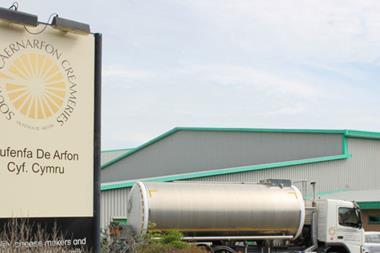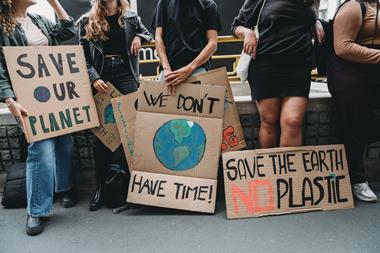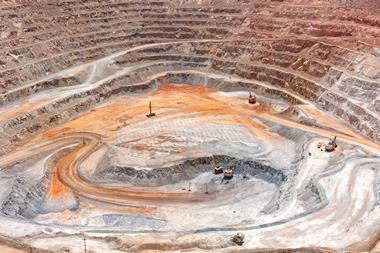A producer of electrical cables for the energy and telecoms sector, Prysmian is embedded in the green transition. Internally too, climate risk is a central concern, says CRO Alessandro De Felice, as it continually develops new ways to integrate TCFD reporting into its ERM framework.
Climate Change Survey 2024
Our climate survey is closing soon, but there’s still time to add your voice to our annual research into climate change risks and how they are impacting businesses and their risk managers.
How is your organisation preparing for climate change and the shift to a low carbon economy?
Take part and help the Disaster Relief Emergency Fund – a donation will be made for every completed survey.
Our commitment to professionalising our sustainability and climate-related efforts existed many years before the Task Force on Climate-Related Financial Disclosures (TCFD) formalised a process for climate disclosure reporting.
We have always held the view that as a world leader in the production of cables for the energy and telecommunications sector, we play an instrumental role in making products that help to achieve environmental sustainability and reduce carbon and greenhouse gas emissions.

We see climate risk as an opportunity. For this reason, our climate journey started long ago.
Our process isn’t fixed, however, and we are always discovering ‘new frontiers’ and adopting new methods for evaluating and calculating our climate-related risks and opportunities.
Integrating climate, TCFD and ERM
Of course, risk management is at the heart of this and one of our early steps was integrating our climate risk process (for identifying, assessing and responding to risks and opportunities); and the TCFD reporting framework into our company-wide ERM framework.
So, what does this mean in practice?
First, risks and opportunities are defined as factors that will have a direct impact on our assets and business model. This aligns with TCFD reporting and represents the first level of analysis and reporting.
After this, we extended our analysis to the risk and opportunities that could affect our supply chains: what is the impact and how do we calculate it?
”We took the decision to carry out specific in-depth benchmark research to understand how our customers and suppliers are facing transition risks.”
Measuring the direct impact on our business assets can be done easily through our loss prevention and risk engineering process and is handled at an operational level by our factories and engineers.
This enables us to carry out stress tests and evaluate what can be done if, for example, we experience the maximum expected loss from an extreme weather event.
When climate risk is integrated into the ERM framework, this level of impact analysis is easy. What becomes complicated is stress-testing your supply chains under various scenarios.
We took the decision to carry out specific in-depth benchmark research to understand how our customers and suppliers are facing transition risks. This put us in a stronger position to identify risks and opportunities that would have the biggest impact on the business at group level.
Modelling our way to resilience
This leads us onto the specifics of scenario analysis. We used scenario analysis to model how the impact and likelihood of identified material risks and opportunities might change under several scenarios, including a 2°C or lower scenario.
Two types of models were considered: IPCC RCP scenarios for the assessment of physical risks; and IEA scenarios for transition risks and opportunities.
We also examined three time horizons: short-term (1 year); medium-term (1–3 years); and long-term (3–10 years).
We leveraged external and internal datasets about potential climate drivers on group-level business activities to build advanced measurement models. This was supported by stochastic and probabilistic analysis such as Monte Carlo simulations, and actuarial and statistical analysis.
”We used scenario analysis to model how the impact and likelihood of identified material risks and opportunities might change under several scenarios, including a 2°C or lower scenario.”
We then layered over macro trends relevant to our business (which can be found in publicly available resources).
This level of analysis isn’t easy to conduct or place in relation to your business model. But a lesson learnt is to conduct this analysis in unity with relevant stakeholders who can provide the additional and necessary knowledge.
For me, this included: control functions; the risk and control committee; the sustainability committee, the CEO and CFO (who will have been involved with hypothesis setting before quantification was applied); and the board, whose role is to evaluate whether the quantitative analysis is coherent in terms of the company’s strategic plans, and its financial and economic projections.
Sealing our commitment
We see this level of analysis as paramount to keeping momentum up on reaching our climate and sustainability goals.
As such, we’ve developed a TCFD programme and, as mentioned earlier, it is integrated into our group’s ERM framework.
This will mean we are committing to:
- Rigorous analysis of scenarios related to climate risk
- Continuous refinement of assessment methodologies
- Ensuring the involvement of top management
- Increasingly strong interaction with stakeholders, suppliers and customers.
This case study originally appeared in our 2023 Climate Change report, which can be read here.




















No comments yet